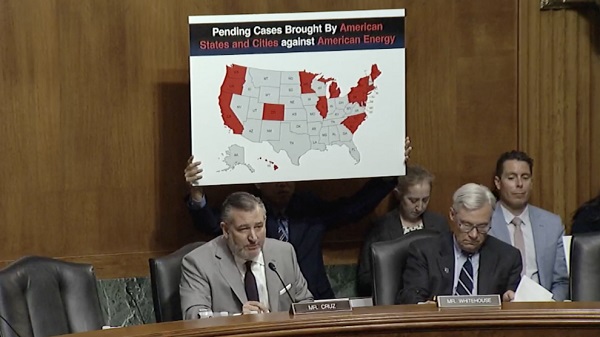Alberta
Putting an end to the photo radar cash cow

Alberta’s government is ending the photo radar cash cow, eliminating areas where photo radar is used to generate revenue with no traffic safety benefit.
Many Albertans have expressed growing frustration with photo radar, questioning its focus on revenue rather than safety. In response to these concerns, Alberta’s government paused the introduction of new photo radar equipment and locations on Dec. 1, 2019. Now, after thorough analysis and consultation, Alberta’s government is taking bold steps to restore public trust.
Effective April 1, 2025, ticketing on numbered provincial highways will end as photo radar will be restricted to school, playground and construction zones. Intersection safety devices in Alberta will also be restricted to red light enforcement only, ending the ‘speed-on-green’ ticketing function.
Municipalities will also be able to request that the province approve additional photo radar locations on an exceptional basis, for high collision areas and where other safety measures cannot be implemented effectively. These types of exceptions will be subject to an audit every two years to assess the effectiveness of photo radar at the site in reducing collisions.
“This is great news for Alberta drivers. These changes will once and for all kill the photo radar cash cow in Alberta. Albertans can be confident that photo radar will only be used to improve traffic and roadside worker safety and not to make money.”
The next step for government is to review every existing photo radar site in the province over the next four months. As part of that review, those that are deemed ineffective, or outside of a school, playground, or construction zone, will be removed. This is expected to reduce the current 2,200 approved sites by 70 per cent, which would also better align the amount of photo radar with other provinces. Currently, there are about 70 per cent more photo radar sites used in 24 Alberta municipalities than the next highest province. Allowing these changes to be implemented over the next four months provides municipalities time to transition, update equipment and adjust contracts with vendors.
“I’m happy to see the province focusing photo radar on playground and construction zones. We need to prioritize safety where it matters most – protecting our children and workers on Calgary’s roads. I’m proud to support this vital step toward safer communities.”
“It is vital we maintain safety where it matters most—around our schools, playgrounds and construction zones. These are areas where enforcement can genuinely protect lives, not just generate revenue. With this new policy change, we’ll see more officers back in neighbourhoods and that visibility will help tackle the growing issues of crime and disorder – a top priority for Edmontonians and Albertans.”
“The Minister’s announcement will ensure that the use of photo radar is focused on enhancing traffic safety on high-risk roadways. RMA looks forward to learning how current photo radar sites will be assessed and is optimistic that this will result in an approach that supports safer roads without unfairly penalizing drivers.”
Municipalities will be encouraged to use traffic-calming measures to improve traffic safety, including speed warning signs, speed tables (large flat speed bump), public education campaigns and other tools designed to improve traffic safety. The province will also help make roads safer by providing municipalities with support to reengineer roads and intersections that have been proven to be unsafe.
Quick facts
- Alberta first introduced photo radar in 1987.
- All photo radar sites were removed from ring roads in Calgary and Edmonton on December 1, 2023.
- The government engaged with municipalities in June and August 2024 about photo radar and specifically to discuss solutions to eliminate ‘fishing holes.’
- The top five revenue-generating sites from last year are:
- Strathcona County – Baseline Road/17 St., 52,558 tickets (144/day) $5,956,573 in fines
- Edmonton – Gateway Blvd./34 Ave., 23,977 tickets (144/day) $2,717,393 in fines
- Edmonton – 170 St./118 Ave., 20,241 tickets (55/day) $2,293,980 in fines
- Calgary – Beddington Tr./Country Hills Blvd., 19,337 tickets (53/day) $2,173,167 in fines
- Edmonton – 127 St./126 Ave., 18,705 tickets (51/day), $2,119,900 in fines
Related information
Agriculture
Lacombe meat processor scores $1.2 million dollar provincial tax credit to help expansion

Alberta’s government continues to attract investment and grow the provincial economy.
The province’s inviting and tax-friendly business environment, and abundant agricultural resources, make it one of North America’s best places to do business. In addition, the Agri-Processing Investment Tax Credit helps attract investment that will further diversify Alberta’s agriculture industry.
Beretta Farms is the most recent company to qualify for the tax credit by expanding its existing facility with the potential to significantly increase production capacity. It invested more than $10.9 million in the project that is expected to increase the plant’s processing capacity from 29,583 to 44,688 head of cattle per year. Eleven new employees were hired after the expansion and the company plans to hire ten more. Through the Agri-Processing Investment Tax Credit, Alberta’s government has issued Beretta Farms a tax credit of $1,228,735.
“The Agri-Processing Investment Tax Credit is building on Alberta’s existing competitive advantages for agri-food companies and the primary producers that supply them. This facility expansion will allow Beretta Farms to increase production capacity, which means more Alberta beef across the country, and around the world.”
“This expansion by Beretta Farms is great news for Lacombe and central Alberta. It not only supports local job creation and economic growth but also strengthens Alberta’s global reputation for producing high-quality meat products. I’m proud to see our government supporting agricultural innovation and investment right here in our community.”
The tax credit provides a 12 per cent non-refundable, non-transferable tax credit when businesses invest $10 million or more in a project to build or expand a value-added agri-processing facility in Alberta. The program is open to any food manufacturers and bio processors that add value to commodities like grains or meat or turn agricultural byproducts into new consumer or industrial goods.
Beretta Farms’ facility in Lacombe is a federally registered, European Union-approved harvesting and meat processing facility specializing in the slaughter, processing, packaging and distribution of Canadian and United States cattle and bison meat products to 87 countries worldwide.
“Our recent plant expansion project at our facility in Lacombe has allowed us to increase our processing capacities and add more job opportunities in the central Alberta area. With the support and recognition from the Government of Alberta’s tax credit program, we feel we are in a better position to continue our success and have the confidence to grow our meat brands into the future.”
Alberta’s agri-processing sector is the second-largest manufacturing industry in the province and meat processing plays an important role in the sector, generating millions in annual economic impact and creating thousands of jobs. Alberta continues to be an attractive place for agricultural investment due to its agricultural resources, one of the lowest tax rates in North America, a business-friendly environment and a robust transportation network to connect with international markets.
Quick facts
- Since 2023, there are 16 applicants to the Agri-Processing Investment Tax Credit for projects worth about $1.6 billion total in new investment in Alberta’s agri-processing sector.
- To date, 13 projects have received conditional approval under the program.
- Each applicant must submit progress reports, then apply for a tax credit certificate when the project is complete.
- Beretta Farms has expanded the Lacombe facility by 10,000 square feet to include new warehousing, cooler space and an office building.
- This project has the potential to increase production capacity by 50 per cent, thereby facilitating entry into more European markets.
Related information
Alberta
Alberta Next: Alberta Pension Plan

From Premier Danielle Smith and Alberta.ca/Next
Let’s talk about an Alberta Pension Plan for a minute.
With our young Alberta workforce paying billions more into the CPP each year than our seniors get back in benefits, it’s time to ask whether we stay with the status quo or create our own Alberta Pension Plan that would guarantee as good or better benefits for seniors and lower premiums for workers.
I want to hear your perspective on this idea and please check out the video. Get the facts. Join the conversation.
Visit Alberta.ca/next
-

 Alberta1 day ago
Alberta1 day agoCOVID mandates protester in Canada released on bail after over 2 years in jail
-

 armed forces1 day ago
armed forces1 day agoCanada’s Military Can’t Be Fixed With Cash Alone
-

 International1 day ago
International1 day agoTrump transportation secretary tells governors to remove ‘rainbow crosswalks’
-

 Business1 day ago
Business1 day agoCarney’s spending makes Trudeau look like a cheapskate
-

 Business1 day ago
Business1 day agoCanada’s loyalty to globalism is bleeding our economy dry
-

 Alberta1 day ago
Alberta1 day agoAlberta Next: Alberta Pension Plan
-

 C2C Journal24 hours ago
C2C Journal24 hours agoCanada Desperately Needs a Baby Bump
-

 Alberta2 days ago
Alberta2 days agoAlberta uncorks new rules for liquor and cannabis






